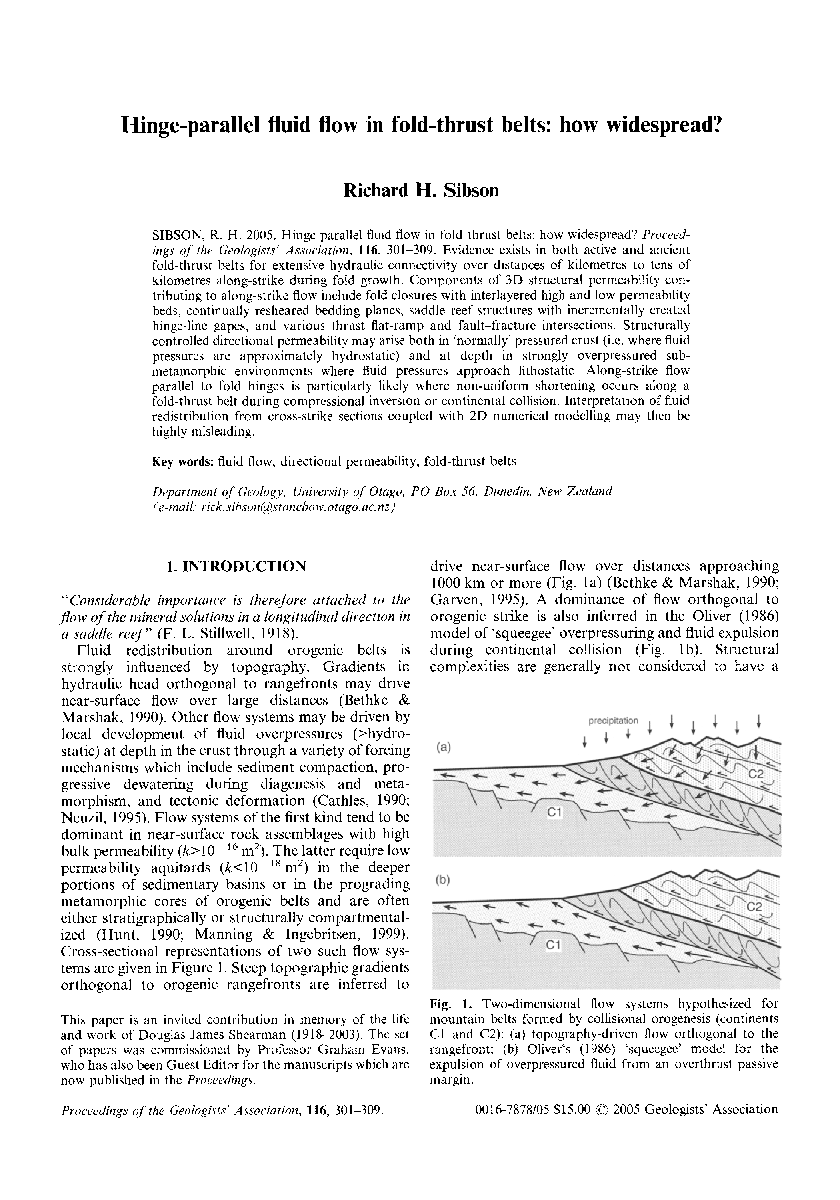| Article ID | Journal | Published Year | Pages | File Type |
|---|---|---|---|---|
| 10120778 | Proceedings of the Geologists' Association | 2005 | 9 Pages |
Abstract
Evidence exists in both active and ancient fold-thrust belts for extensive hydraulic connectivity over distances of kilometres to tens of kilometres along-strike during fold growth. Components of 3D structural permeability contributing to along-strike flow include fold closures with interlayered high and low permeability beds, continually resheared bedding planes, saddle reef structures with incrementally created hinge-line gapes, and various thrust flat-ramp and fault-fracture intersections. Structurally controlled directional permeability may arise both in 'normally' pressured crust (i.e. where fluid pressures are approximately hydrostatic) and at depth in strongly overpressured submetamorphic environments where fluid pressures approach lithostatic. Along-strike flow parallel to fold hinges is particularly likely where non-uniform shortening occurs along a fold-thrust belt during compressional inversion or continental collision. Interpretation of fluid redistribution from cross-strike sections coupled with 2D numerical modelling may then be highly misleading.
Related Topics
Physical Sciences and Engineering
Earth and Planetary Sciences
Geology
Authors
Richard H. Sibson,
